Earth Lodges
July 2023 Knife River Indian Villages Stanton, ND #28-2023
DISCOVERIESSNAPSHOTS
AL
7/13/2023
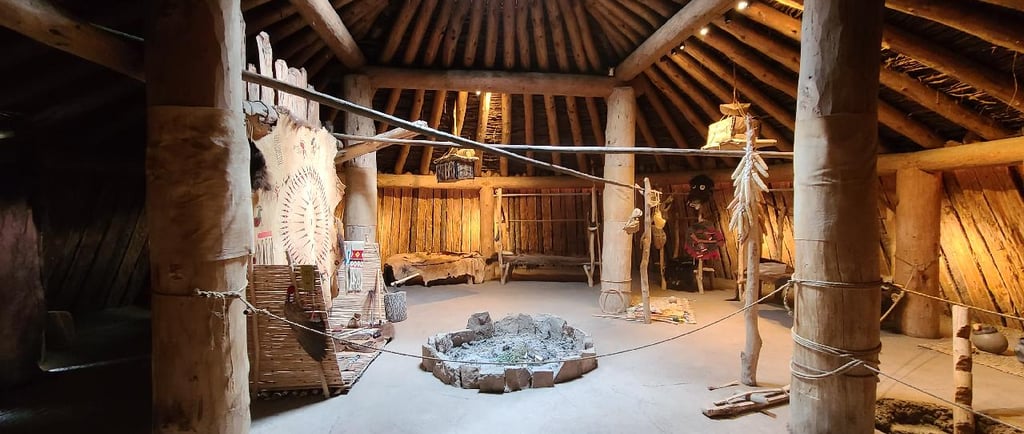

The Hidatsa built prosperous villages along the banks of the Knife River near it’s confluence with the Missouri River near the present day Town of Stanton, North Dakota. Once they arrived in this area, they were able to take advantage many things that the river’s flood plain had to offer. They had fish from the river and wild game that came to eat and drink. There were berries to gather and most importantly the land had very fertile soil from the frequent flooding. This made it easier to cultivate than the very hard prairie soil not far away. The fertile land allowed them to become more agriculturally based and they formed permanent settlements here. These villages became trade centers and neighboring tribes would visit to exchange hides, dried meats, and other goods for the garden produce and flint of the Knife River Indians.
Lewis and Clark camped nearby to these villages along the Missouri River for the winter of 1804 at Fort Mandan. They forged relationships with the Hidatsa during time. It was in these villages that they met Sacajawea (Sakakawea) who went west with them to help guide and to translate with the western tribes since she could speak their languages. She had been taken from her home in Idaho as a Lemhi Shoshone child during a raid by the Hidatsa and brought to the Knife River as a captive. She was sold to a French trader who was living among them to be his wife.
The Hidatsa constructed earth lodges in these villages, often clustering them together by clan. There is a reconstruction of an earth lodge on site. With my engineering background, I thought it was impressive how they constructed the homes using massive columns, timber beams, and slanted timber walls that they later covered with dirt. They were grooved and shaped to match and there were no signs of any rope, hide or hardware to hold the parts together, just gravity. Once inside the dwelling I saw how they arranged beds around the outside walls, had storages areas, cooking area, sacred area, and a main fire pit in the middle with a vent in the center of the roof for exhausting smoke. And would you believe the women of the village were the ones to gather the materials and build the lodges. The men only helped lift the massive timbers in place.
The Knife River Indian Village Visitor Center also preserves the sites where the villages existed. I took a short hike to the where the villages were down by the river, and you can clearly see the round berms and depressions on the ground where the lodges once stood.
In the museum at the visitor center there are multiple displays where I learned more about their culture, and how they lived.
An example is the cache pit they dug in the ground that resembles pottery, but is lined with twigs and branches to be able to layer and position their corn, beans, and squash preserving for later use.
There is a Bull Boat constructed of willow branches and bison bull hide that was used to transport several hundred pounds of of people or cargo on the river.
A bison bladder is cleverly adapted to be used to transport water from the river to the village.
Tools were made from what they had, which were flint, bones and antlers.
Until beads became available by trade, clothing and bags were adorned with pieces of porcupine quill and bird feathers that were dyed bright colors.
Young women in the village would make small balls and play a game where you toss the ball onto your foot and then try to keep it in the air by kicking, much like the game we know as Hacky Sack.
I sometimes yearn for a simpler life, in a simpler time, with a sense of community and people helping people. There’s a romantic sense in growing your own crops, sharing in a bountiful harvest, and preserving some to sustain until the next growing season. I appreciate the civility and compassion of the Hidatsa for helping strangers in their time of need, and benefitting from the blacksmithing among other skills and techniques those strangers provided in return. They told Lewis & Clark and their Expeditioners “If we eat, your eat. If we starve, you starve.”
Looking back I can say that I had great parents who did an amazing job of raising me and my siblings. We had a sense of community and the neighbors looked out for us and our best interests. Life was not easy or perfect in our eyes, but we worked together to get the chores done and made time for fun and play.
It saddens me that the world does not feel as safe and secure as it did growing up, or during my early adult life. I don’t know if it’s that news reporting is more immediate and seemingly biased, or if information is too easily accessed through the internet, or if it’s the photoshopping and misinformation that is everywhere so you no longer know what to believe, or if people have become so angry and vindictive, but it feels like the world is meaner and less compassionate today. Greed, entitlement, hate crimes, random violence, disrespect, people trying to control the happiness and welfare of others, so many bad things overshadowing the good.. Differences seem to divide instead of being seen as a way to provide a different viewpoint and find a better compromise. At the end of the day, concern for our fellow man should bring people together. How do we get back to better times? I say live and let live.
The Hidatsa faced their own challenges. The original Knife River Village was destroyed by fire in a raid by the Sioux. They rebuilt upstream along the Missouri River, while in more modern times their newer generations were forced to relocate
Below is my visual exploration from the Knife River Hidatsa Village.
Share your comments on Facebook or email us at roadfronts@gmail.com
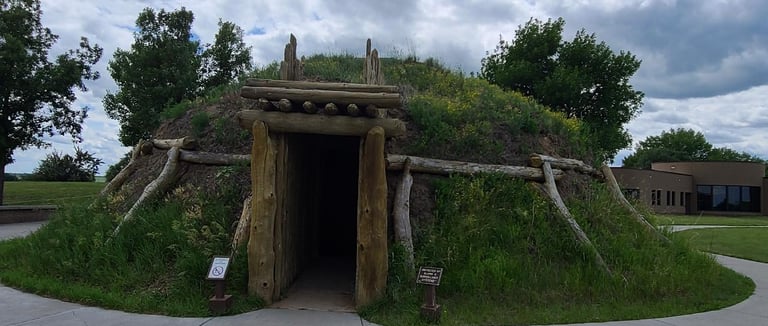

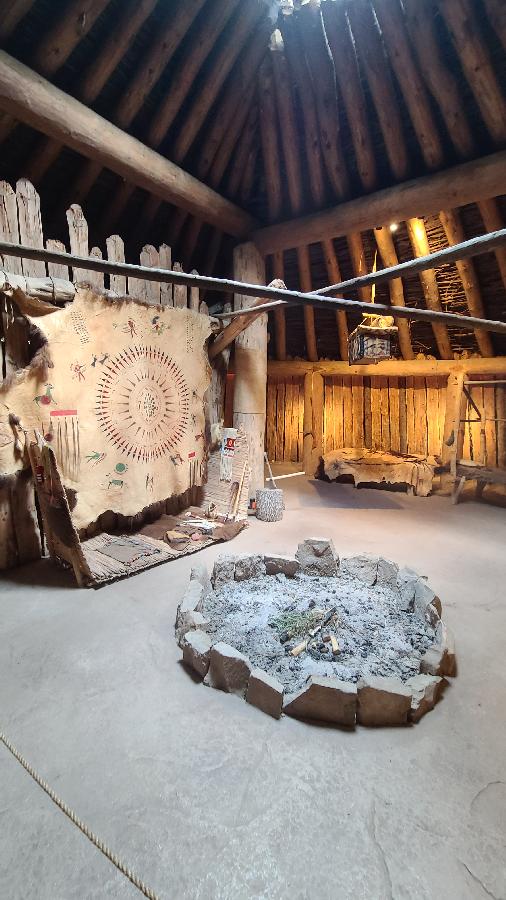

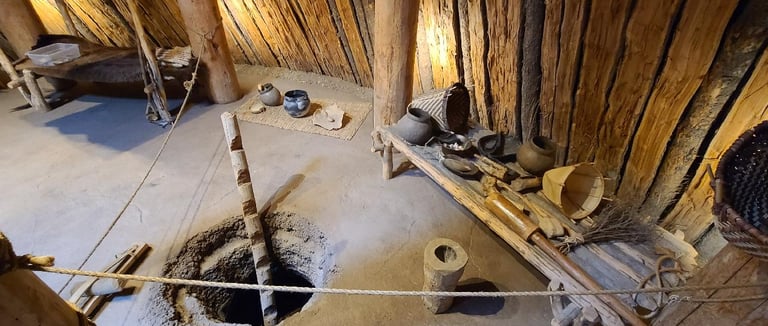


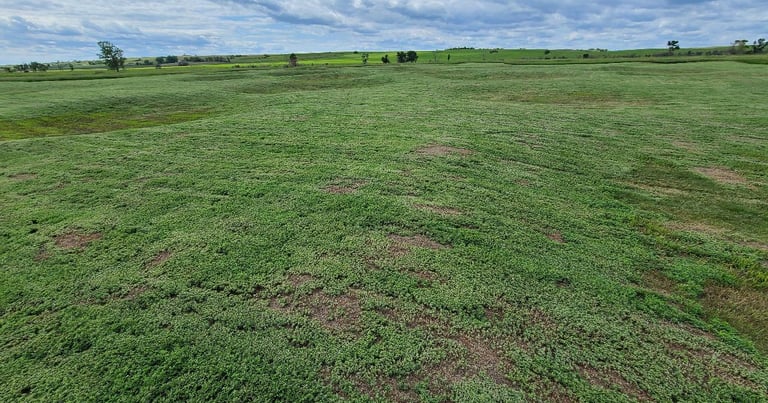
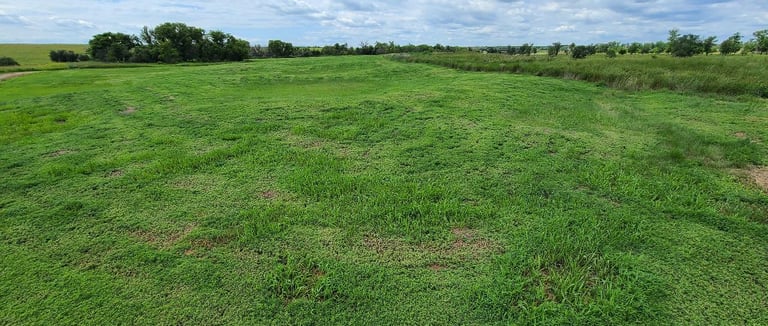

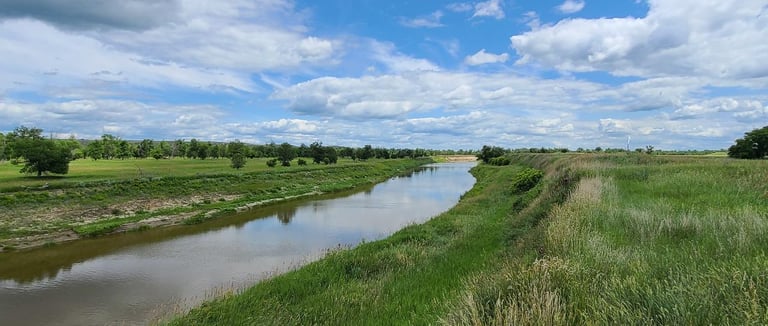

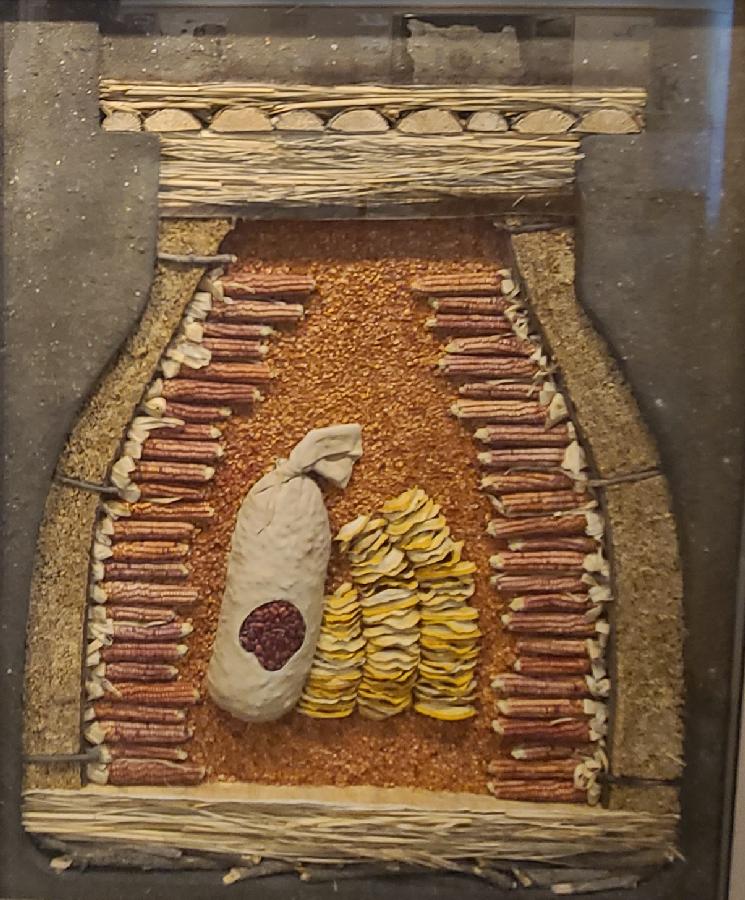

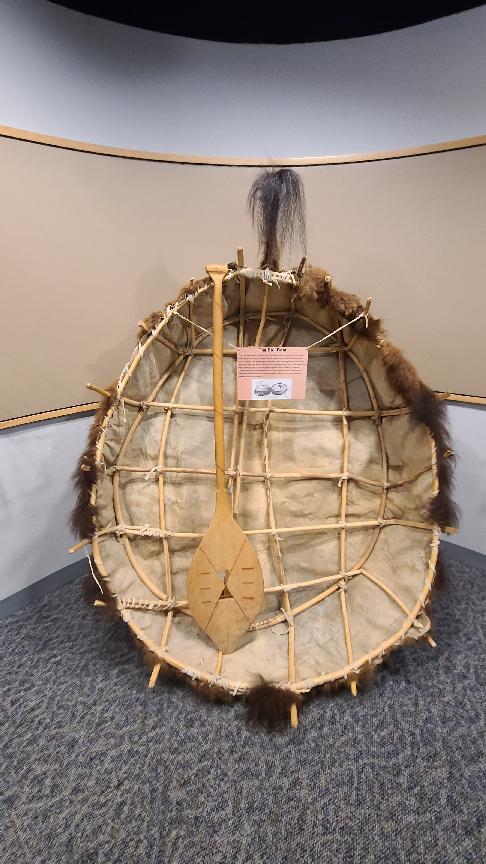

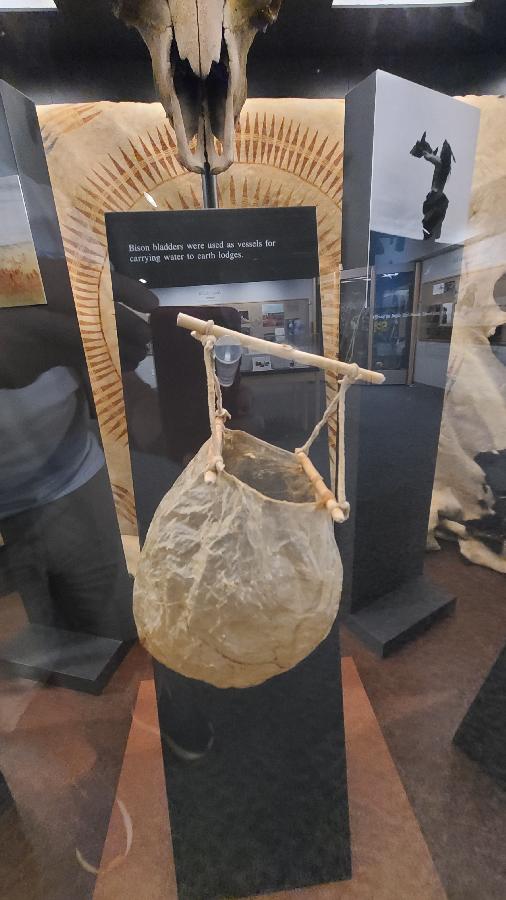

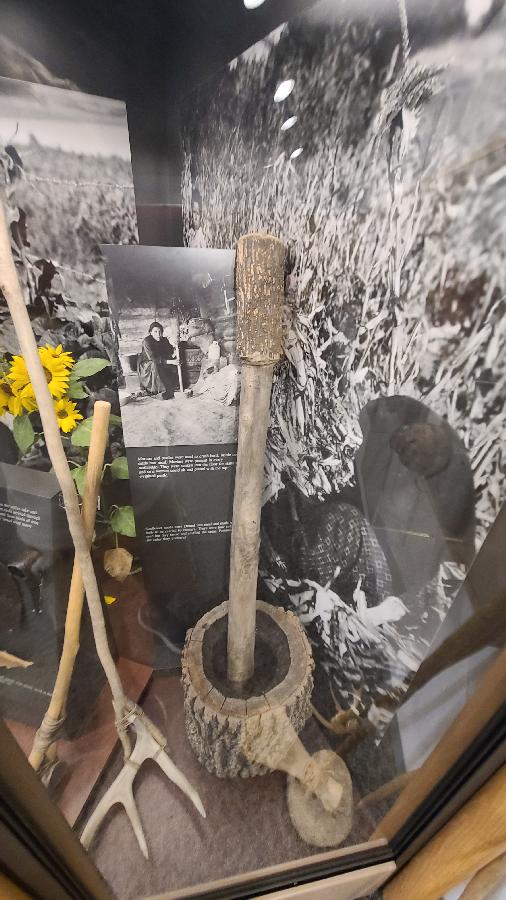

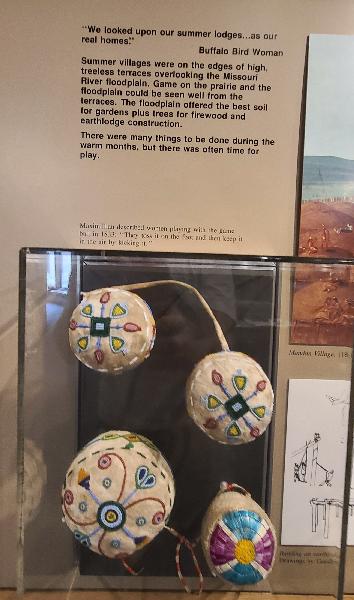

Earth Lodge Exterior
Earth Lodge Interior
Depressions at village site
Earth Lodge Interior
Depressions at Village site
Knife River at Village Site
Bull Boat
Bison Bladder Water Vessel
Mortar and Pestle, Rake, and Hoe
Hacky Sack Balls
Cutaway of a cache pit
Subscribe for monthly updates
Current location:
